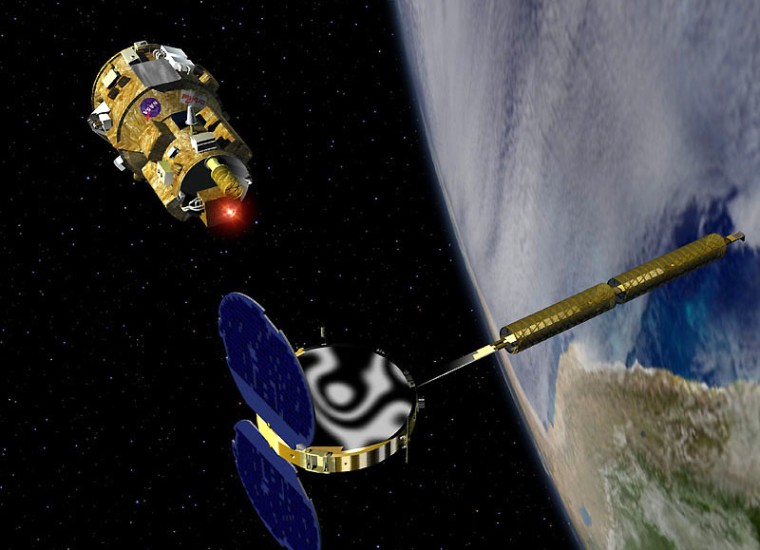Citing sensitive information, NASA says it will not publicly release its official report on the failure of a spacecraft during a mission to rendezvous with a Pentagon satellite without human help.
The 70-page document on the DART spacecraft mishap contains details protected by the International Traffic in Arms Regulations, space agency spokesman Michael Braukus told The Associated Press on Friday.
But NASA plans to release a summary of the report that will explain why DART did not complete its mission last year, Braukus said. An initial analysis found that the 800-pound spacecraft suffered a fuel problem, but engineers did not detect a fuel leak.
The robotic Demonstration for Autonomous Rendezvous Technology spacecraft was launched from Vandenberg Air Force Base, Calif., in April 2005 to perform an unprecedented rendezvous with another satellite without human intervention. The mission was managed by NASA's Marshall Space Flight Center in Huntsville, Ala.
DART successfully located its target and flew within 300 feet (90 meters). But the project ended prematurely when the spacecraft shut down halfway into the 24-hour mission and failed to complete several automated tasks, including circling the satellite and making close approaches.
Mission manager Jim Snoddy previously said the spacecraft detected a fuel problem and navigational errors with its on-board computers.
Testing robotic capabilities
The $110 million project was meant to test the capability of robots to perform tasks currently done by astronauts. NASA envisions future applications such as the robotic delivery of cargo to space stations and automated docking and repair between spacecraft in orbit.
A week after the mishap, NASA assembled a team to investigate. The space agency approved the team's report in February and has released the findings internally "on specific request and 'as-need basis,'" Braukus said. NASA is working with the team to write the public summary omitting the sensitive information, he said.
The space agency distributed a new public information policy last month specifying that information protected by ITAR is considered "sensitive but unclassified" and that unauthorized release to news organizations could result in prosecution or disciplinary action.
In DART's case, the ITAR concerns may be connected with the use of a navigation device produced by the British-based Surrey Space Centre, which sold a similar version of the device to the Chinese for use in a recent space probe.
Speaking on condition of anonymity, sources have told MSNBC.com that the case may have sparked a criminal investigation. However, when NASA representatives were asked to comment on such reports, they said they were forbidden to respond to any requests for clarification, confirmation or denial.
Contrast with military project
NASA's embarrassment over the DART debacle, and the excruciatingly long wait for public disclosure of the mishap report, contrasts with the tone of reports relating to the U.S. Air Force's robot rendezvous mission, known as XSS-11.
The XSS-11 spacecraft made a successful rendezvous with its own booster rocket last September — an achievement — and then began shifting its path to match orbits with another target satellite.
According to non-government space observers who talked with MSNBC.com privately, XSS-11 is now completing this shift and would soon be able to close in on a derelict NASA satellite known as the Cosmic Background Explorer.
This report includes information from The Associated Press and NBC News space analyst James Oberg.
